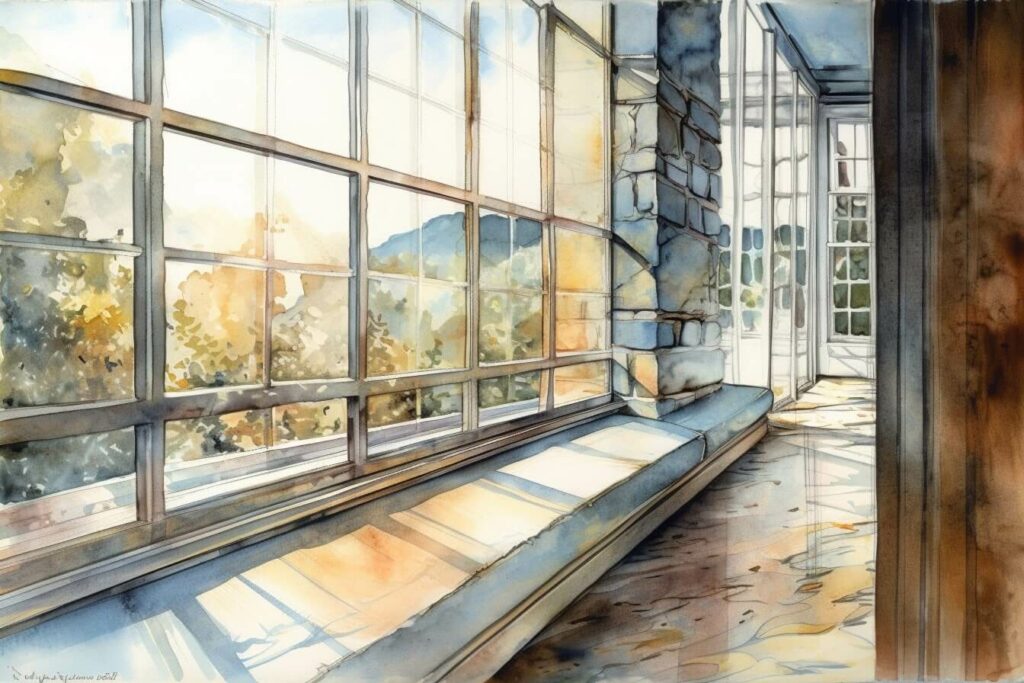Unlock Premium, Members-Only Content
Your source for the most relevant updates in sustainable construction
As architects and interior designers, you are in the unique position of being able to create spaces that are not only aesthetically pleasing but also energy-efficient and environmentally responsible. One key aspect of energy efficiency is eliminating or minimizing thermal bridging.
In this comprehensive guide, we will explore the most asked questions about thermal bridges and provide you with the knowledge you need to make informed design decisions.
Ultimately, this will help you create buildings and spaces that are both beautiful and sustainable.
What is Thermal Bridging?
Thermal bridges occur when a material with high thermal conductivity forms a continuous path between the inside and outside of a building, allowing heat to transfer more rapidly than through other parts of the building envelope.
This can result in increased energy consumption, condensation, and mold growth. Thermal bridges can occur in various building components, such as walls, roofs, floors, windows, and doors.
Why is Addressing Thermal Bridging Important?
There are several reasons why addressing thermal bridging is important for architects and interior designers:
- Energy Efficiency: Thermal bridges can lead to significant heat loss or gain, increasing energy consumption for heating and cooling. By minimizing thermal bridging, you can help create more energy-efficient buildings and contribute to a more sustainable future.
- Occupant Comfort: Thermal bridging can cause cold spots and drafts, making the indoor environment less comfortable for occupants. Addressing thermal bridges can improve the overall comfort of a building.
- Building Durability: Moisture and condensation can accumulate where thermal bridges occur, leading to potential structural damage and mold growth. By addressing thermal bridging, you can help maintain the integrity and durability of a building.
- Regulatory Compliance: Many building codes and green building certifications, such as LEED and Passive House, require architects and designers to address thermal bridges in their projects.
Unlock Premium, Members-Only Content
Your source for the most relevant updates in sustainable construction
How Can I Identify and Prevent Thermal Bridging?
There are several strategies for identifying and preventing thermal bridging in your projects:
- Use Thermal Imaging: A thermal imaging camera can help you visualize areas of heat loss or gain, making it easier to identify and address thermal bridges.
- Design Continuous Insulation: Incorporate continuous insulation into your designs to eliminate or minimize thermal bridging. This can be done by using exterior insulation and finish systems (EIFS), structural insulated panels (SIPs), or insulated concrete forms (ICFs).
- Choose Appropriate Materials: Select building materials with low thermal conductivity, such as wood, insulation, or aerated concrete blocks. Avoid using materials with high thermal conductivity, such as steel or aluminum, in areas prone to thermal bridges.
- Detailing: Pay close attention to the detailing of your designs, particularly at junctions and transitions between different building components. Proper detailing can help to minimize thermal bridges.
- Use Thermal Breaks: Incorporate thermal breaks into your designs, such as insulated window frames, to minimize heat transfer.
- Consult with Experts: Collaborate with energy modeling experts and building envelope specialists to ensure your designs effectively address thermal bridging.

What are the Most Common Types of Thermal Bridges, and How Can I Address Them?
Some of the most common types of thermal bridging include:
- Wall-to-Floor Junctions: Insulate the junction between the wall and floor using continuous insulation or adding insulation as a thermal break.
- Wall-to-Roof Junctions: Ensure that insulation is continuous at the junction between the wall and roof. This can be achieved using SIPs and ICFs or carefully detailing the insulation.
- Window and Door Frames: Choose window and door frames with built-in thermal breaks or use insulated frames to minimize heat transfer. Additionally, ensure that the installation of windows and doors is properly sealed and insulated to avoid gaps that can lead to thermal bridging.
- Balconies and Cantilevered Structures: Use structural thermal breaks, such as thermal break connectors, to minimize heat transfer between the interior and exterior of the building at the balcony or cantilevered structure connections.
- Penetrations and Openings: Insulate and seal around penetrations, such as pipes, ducts, and electrical outlets, to prevent thermal bridges. Consider using pre-insulated pipes and ducts or adding insulation around penetrations.
- Steel and Metal Framing: Steel and metal framing can create significant thermal bridges. Consider using alternative framing materials like wood or insulated metal panels to mitigate this. If steel or metal framing is necessary, consider adding exterior continuous insulation to minimize thermal bridges.
Thermal Bridging: A Conclusion
Addressing thermal bridges is essential for creating energy-efficient, comfortable, and durable buildings. As architects and interior designers, you have the power to make a difference in the built environment by incorporating strategies to minimize thermal bridging in your designs. This benefits building occupant and contributes to a more sustainable future.
We invite you to explore UGREEN sustainability consultancy services to enhance further your knowledge and skills in creating sustainable and energy-efficient designs. Our team of experts can help guide you through the process of addressing thermal bridging and other sustainability challenges. Additionally, discover UGREEN Skills, our sustainability educational platform for professionals and companies, to stay up-to-date with the latest trends, techniques, and innovations in sustainable design.
With the knowledge and resources provided by UGREEN, you can create stunning, functional, and environmentally responsible spaces that will leave a lasting positive impact on our world.
Unlock Premium, Members-Only Content
Your source for the most relevant updates in sustainable construction
If you need our services in the Portuguese language, click here.